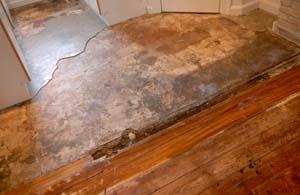Do's & Don'ts of Water Restoration.
Do's & Don'ts of Water Restoration.
Blog Article
We've unearthed this article on Safety Tips To Prevent Fire And Water Damage directly below on the internet and believe it made good sense to write about it with you on this page.

Water gives life, water invasion on components where it's not supposed to be can result in damage. Houses with water damages smell moldy as well as old.
Water can originate from many resources such as hurricanes, floods, ruptured pipes, leakages, as well as drain problems. In case you experience water damage, it would certainly be good to know some safety precautions. Here are a few standards on how to deal with water damages.
Do Prioritize House Insurance Policy Protection
Water damage from flooding as a result of heavy winds is seasonal. You can additionally experience an unexpected flooding when a faulty pipeline unexpectedly breaks right into your house. It would certainly be best to have residence insurance coverage that covers both disasters such as natural tragedies, and also emergency situations like busted plumbing.
Don't Neglect to Turn Off Energies
In case of a catastrophe, particularly if you reside in a flood-prone area, it would be suggested to switch off the main electrical circuit. This cuts off power to your whole home, stopping electrical shocks when water can be found in as it is a conductor. Furthermore, don't fail to remember to switch off the major water line shutoff. Furniture will certainly relocate about as well as create damage when floodwaters are high. Having the primary shutoff shut off protects against further damages.
Do Remain Proactive as well as Heed Climate Signals
Storm floodings can be really unforeseeable. If there is a history of flooding in your community, stay ready as well as aggressive. If you live near a river, creek, or lake , pay attention to evacuation warnings. Take out valuables from the very beginning as well as basement, then put them on the highest feasible level. Doing so reduces potential building damage.
Do Not Disregard the Roof
You can stay clear of rain damages if there are no holes and also leaks in your roofing. This will certainly protect against water from moving down your walls as well as soaking your ceiling.
Do Focus On Small Leakages
A burst pipe doesn't occur overnight. Typically, there are red flags that suggest you have actually weakened pipelines in your home. For example, you might observe bubbling paint, peeling wallpaper, water touches, water stains, or dripping noises behind the wall surfaces. Eventually, this pipe will burst. Ideally, you must not wait for things to escalate. Have your plumbing repaired before it leads to enormous damages.
Don't Panic in Case of a Burst Pipe
Maintaining your clearheadedness is essential in a time of dilemma. Since it will suppress you from acting quickly, panicking will only compound the trouble. Timing is crucial when it comes to water damages. The longer you wait, the more damages you can anticipate. Hence, if a pipeline bursts in your residence, right away turned off your major water valve to remove the source. Unplug all electrical outlets in the location or transform off the circuit breaker for that component of the residence. Ultimately, call a trusted water damages repair specialist for aid.
Water provides life, water breach on components where it's not intended to be can result in damage. Residences with water damages smell moldy and old.
Water damage from flood fees to heavy winds is seasonal. You may discover bubbling paint, peeling wallpaper, water streaks, water stains, or dripping audios behind the walls. When it comes to water damages, timing is key.
Some Do's & Don't When Dealing with a Water Damage
DO:
Make sure the water source has been eliminated. Contact a plumber if needed. Turn off circuit breakers supplying electricity to wet areas and unplug any electronics that are on wet carpet or surfaces Remove small furniture items Remove as much excess water as possible by mopping or blotting; Use WHITE towels to blot wet carpeting Wipe water from wooden furniture after removing anything on it Remove and prop up wet upholstery cushions for even drying (check for any bleeding) Pin up curtains or furniture skirts if needed Place aluminum foil, saucers or wood blocks between furniture legs and wet carpet Turn on air conditioning for maximum drying in winter and open windows in the summer Open any drawers and cabinets affected for complete drying but do not force them open Remove any valuable art objects or paintings to a safe, dry place Open any suitcases or luggage that may have been affected to dry, preferably in sunlight Hang any fur or leather goods to dry at room temperature Punch small holes in sagging ceilings to relieve trapped water (don't forget to place pans beneath!); however, if the ceiling is sagging extremely low, stay out of the room and we'll take care of it DO NOT:
Leave wet fabrics in place; dry them as soon as possible Leave books, magazines or any other colored items on wet carpets or floor Use your household vacuum to remove water Use TV's or other electronics/appliances while standing on wet carpets or floors; especially not on wet concrete floors Turn on ceiling fixtures if the ceiling is wet Turn your heat up, unless instructed otherwise

I'm just very drawn to Keeping Your Home Safe This Holiday Season and I am praying you enjoyed reading the piece. For those who enjoyed our article kindly do not forget to share it. We cherish reading our article about 5 Home Safety Tips To Reduce The Risk Of Fire And Water Damage.
Report this page